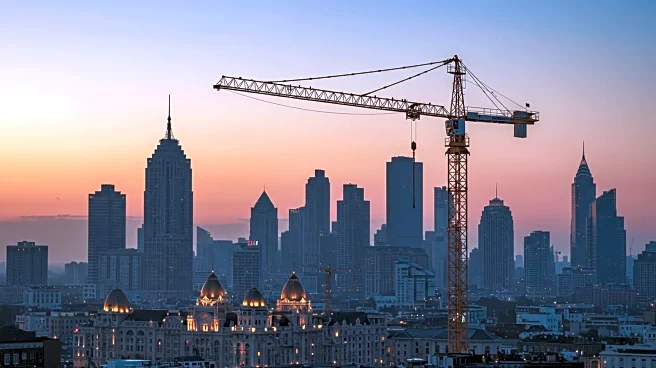What is the story about?
What's Happening?
The Asia Pacific region, excluding China, has experienced unprecedented growth in hotel construction projects, according to the Q2 2025 Hotel Construction Pipeline Trend Report by Lodging Econometrics. The region's total pipeline reached a record with 2,140 projects comprising 409,616 rooms, marking a 4% year-over-year increase in projects and a 1% rise in rooms. India has emerged as the leading country in the region with a record-high of 761 projects and 99,195 rooms, showing a 25% increase in projects and a 32% rise in rooms year-over-year. Vietnam follows with 247 projects and 83,022 rooms. The upscale chain scale led the region with record-high totals of 534 projects and 105,002 rooms, reflecting a 7% increase in projects and a 6% rise in rooms year-over-year.
Why It's Important?
The surge in hotel construction projects in the Asia Pacific region, particularly in India and Vietnam, signifies robust economic growth and increased tourism potential. This expansion is likely to boost local economies, create jobs, and enhance infrastructure development. The growth in the upscale and luxury chain scales indicates a rising demand for high-end accommodations, which could attract more international travelers and business investments. Countries like India and Vietnam stand to benefit significantly from this trend, potentially increasing their global tourism market share and improving their hospitality sectors.
What's Next?
Looking ahead, the Asia Pacific region is expected to continue its growth trajectory in hotel construction. Lodging Econometrics forecasts the opening of 349 new hotels and 68,497 rooms by the end of 2025, with further expansions anticipated in 2026 and 2027. This ongoing development may prompt increased investment from international hotel chains and developers, further enhancing the region's appeal as a prime destination for travelers and businesses alike.
Beyond the Headlines
The rapid expansion in hotel construction across the Asia Pacific region may also have environmental implications, as increased infrastructure development can lead to greater resource consumption and potential ecological impacts. Stakeholders may need to consider sustainable practices and green building technologies to mitigate these effects and ensure long-term environmental health.
AI Generated Content
Do you find this article useful?











